Taper Pulley
HIGH QUALITY PRECISE MANUFACTURER &SUPPLIER
Taper Pulley – Your Trusted Partner in Power Transmission
At the heart of our business lies our expertise in taper pulley technology. Our products are designed with a unique tapered profile that offers unparalleled advantages. The variable-diameter design allows for seamless adjustment of the transmission ratio, enabling precise control over power transmission and increased efficiency. This feature, coupled with superior build quality and long-lasting durability, makes our taper pulleys the preferred choice for demanding industrial environments.
Our taper pulleys are versatile and can be found in a variety of applications, including material handling equipment, agricultural machinery, textile manufacturing, and power generation systems. Renowned for their ability to optimize energy transfer and minimize maintenance requirements, our products are trusted by leading manufacturers and industries worldwide.
At Taper Pulley, we take pride in our commitment to customer satisfaction. Our skilled engineering team works closely with clients to understand their specific needs and provide tailored solutions. We offer comprehensive technical support, custom design capabilities, and reliable after-sales service to ensure our customers’ success.
Fueled by a culture of continuous innovation, we constantly invest in research and development to stay at the forefront of the industry. Our state-of-the-art manufacturing facilities and advanced quality control measures ensure that every taper pulley that leaves our doors meets the highest standards of performance and reliability.
As a trusted partner in power transmission, Taper Pulley is dedicated to empowering our clients’ success through innovative products, exceptional service, and unwavering dedication to excellence. Let us be your partner in optimizing your power transmission systems and driving your business forward.
Taper pulley for sale
-
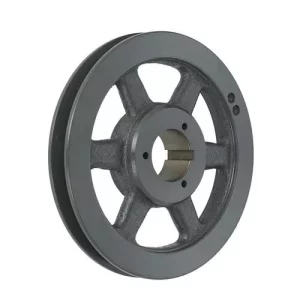
1tb Grip Belt Pulley with open tapered bushing
-
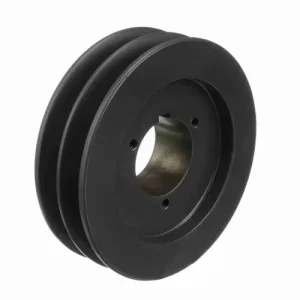
2b Gripbelt pulley with open tapered bushing for all A and B section belts
-
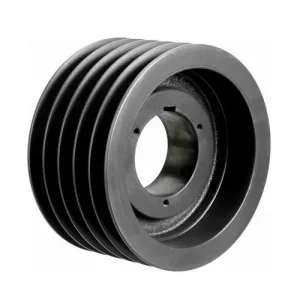
5b Gripbelt Pulley with open tapered bushing for A and B section belts
-
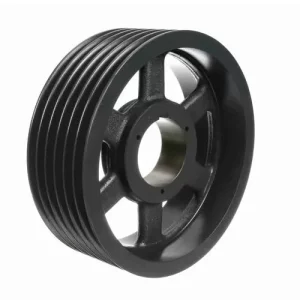
5V Series Cast Iron Six Groove Pulley with open tapered bushing for 5V belts
-
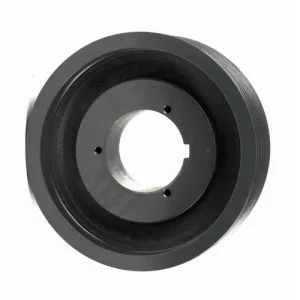
8V Series Cast Iron Sixteen Groove Pulley with open tapered bushing
-
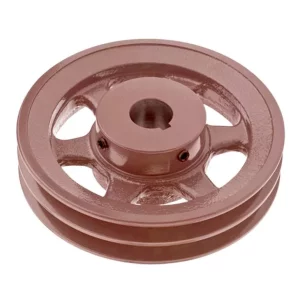
Taper Lock Pulley/Taper Bore Pulley
What is a tapered pulley?
A tapered pulley, also called a variable pitch pulley or conical pulley, is a special power transmission component that has a unique tapered or conical shape, in contrast to the more common cylindrical design of a conventional pulley.
Features of taper pulley
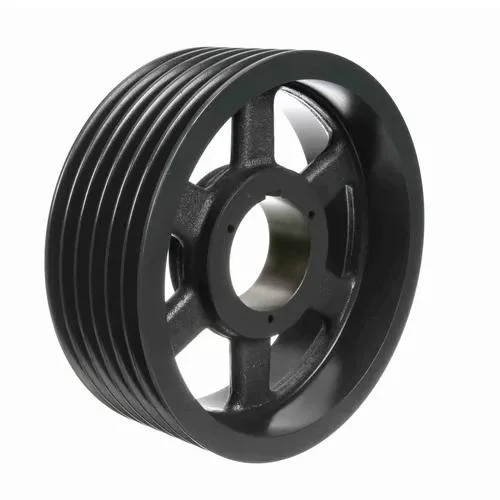
Tapered Profile
The defining feature of a taper pulley is its conical or tapered shape, with a gradually reducing diameter from one side to the other.
This tapered design is in contrast to the more common cylindrical shape of standard pulleys.
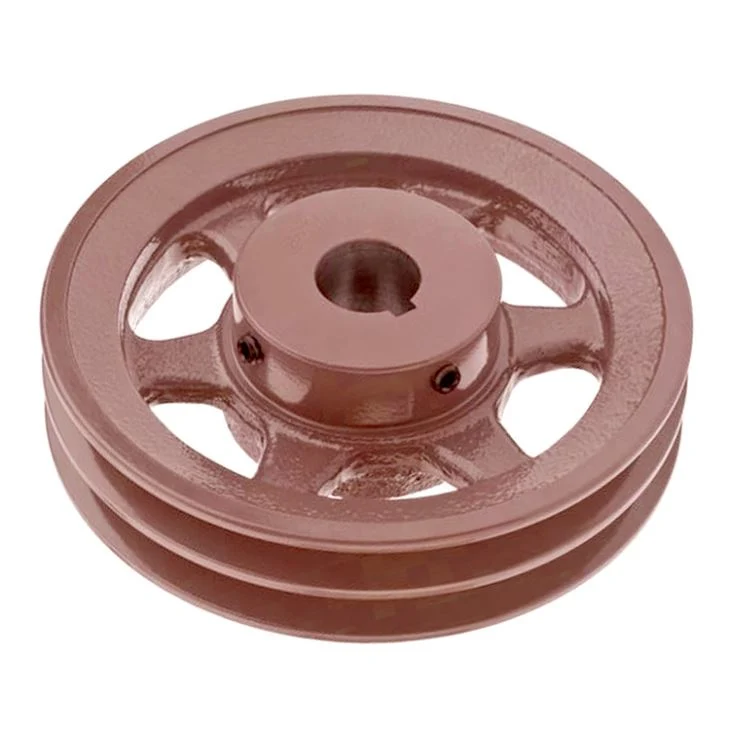
Variable Pitch Diameter
Due to the tapered profile, the effective pitch diameter of a taper pulley can be adjusted by moving the belt or V-belt to different positions along the cone.
This variable pitch diameter is the core mechanism that enables the adjustment of the transmission ratio
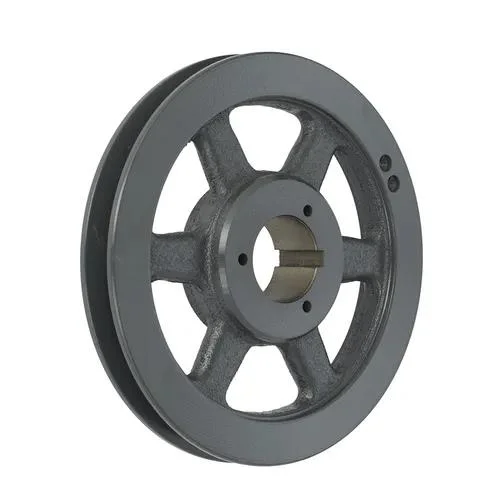
Adjustable Transmission Ratio
The ability to vary the pitch diameter allows the transmission ratio between the driver and driven pulleys to be easily adjusted.
This flexibility in adjusting the gear ratio is a key advantage of taper pulleys, as it eliminates the need to replace the entire pulley assembly.
Main components of the taper pulley
★★★★★
Tapered Sheave/Hub:
This is the core component of the taper pulley, featuring the characteristic tapered or conical shape.
The sheave or hub is the part that directly contacts the belt or V-belt and transmits the power.
The tapered profile allows for the adjustment of the effective pitch diameter.
Bushing or Adapter:
The bushing or adapter mounts the taper pulley onto the shaft.
It is designed to fit snugly onto the shaft and provides a secure connection between the pulley and the driving/driven component.
To accommodate different shaft configurations, bushings come in various types, such as straight, tapered, or split.
Locking Mechanism:
A locking mechanism is typically employed to prevent the taper pulley from slipping on the shaft.
This can be in the form of a set screw, key, or other locking device that secures the pulley in place on the shaft.
The locking mechanism ensures the pulley remains fixed and prevents unwanted movement during operation.
Shaft:
The shaft is the rotating component on which the taper pulley is mounted. It transmits the power from the driver to the driven system.
The shaft must be appropriately sized and designed to support the loads and torque transmitted through the taper pulley.
Belt or V-Belt:
The belt or V-belt is the flexible component that connects the taper pulley to the other pulleys in the power transmission system.
The belt or V-belt is responsible for transmitting the power from the driver to the driven components.
The belt’s position on the tapered pulley can be adjusted to change the effective pitch diameter.
Optional Accessories:
Depending on the application, taper pulleys may be equipped with additional accessories, such as guards, tensioners, or alignment devices, to ensure safe and efficient operation.
Safety and maintenance related to taper pulley
★★★★★
Safety Considerations:
Guard and Shielding:
Taper pulleys should be equipped with appropriate guards or shielding to prevent accidental contact with the rotating components.
This helps protect operators and nearby personnel from potential entanglement or contact hazards.
Alignment and Tensioning:
Proper alignment of the taper pulley, shaft, and belt/V-belt is essential to prevent excessive vibration, wear, and potential failure.
Correct tensioning of the belt/V-belt ensures efficient power transmission and reduces the risk of slippage or premature wear.
Rotational Speed Limits:
Taper pulleys should be operated within the recommended rotational speed limits to avoid excessive centrifugal forces and potential catastrophic failure.
Exceeding the maximum speed can lead to component damage and safety risks.
Maintenance Access:
Sufficient clearance and accessibility around the taper pulley should be maintained to facilitate safe inspection, adjustment, and maintenance activities.
Maintenance Practices:
Regular Inspection:
Taper pulleys should be inspected regularly for signs of wear, damage, or deterioration, such as cracks, deformation, or excessive play in the bushing/adapter.
Visual inspections can help identify potential issues before they escalate.
Lubrication:
Proper lubrication of the taper pulley’s bushing or adapter is essential to minimize friction, wear, and heat buildup.
The lubrication type and frequency should be in accordance with the manufacturer’s recommendations.
Alignment and Adjustment:
Periodic checks and adjustments of the taper pulley’s alignment, both on the shaft and with the belt/V-belt, help maintain efficient power transmission and prevent premature wear.
Component Replacement:
Worn or damaged components, such as the bushing, adapter, or locking mechanism, should be replaced in a timely manner to maintain the taper pulley’s integrity and performance.
Cleaning and Housekeeping:
Keeping the taper pulley and its surrounding area clean, free of debris, and well-maintained can help prevent contamination, premature wear, and potential safety issues.
Main areas of application of taper pulley
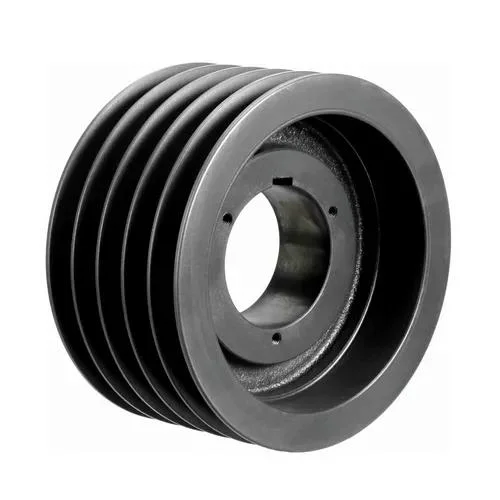
Material Handling Equipment
Taper pulleys are commonly used in conveyor systems, cranes, hoists, and other material-handling machinery.
The adjustable transmission ratio optimizes the speed and torque requirements for efficient material transport.
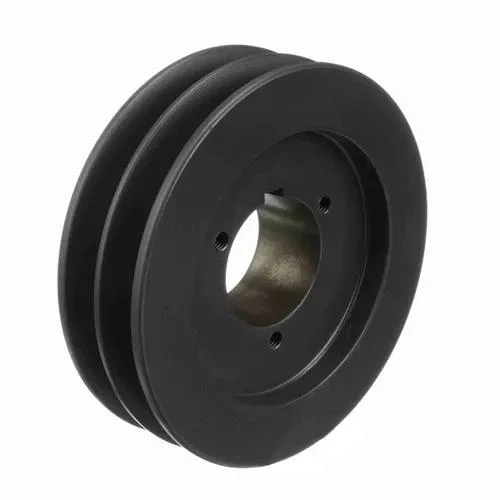
Textile Machinery
In textile manufacturing processes, taper pulleys drive and control the speed of spinning frames, weaving machines, and other textile processing equipment.
The flexibility of adjusting the transmission ratio is crucial for maintaining the desired fabric properties and production speeds.
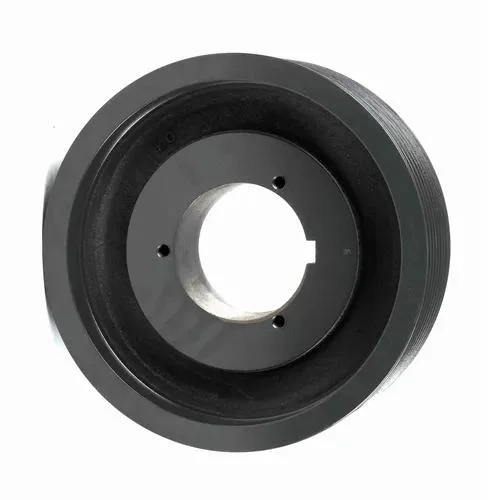
Agricultural Machinery
Taper pulleys find applications in agricultural equipment, such as tractors, harvesters, and other farm machinery.
The variable speed control enabled by taper pulleys helps optimize the operation of these machines for different tasks and field conditions.

Power Generation Systems
Taper pulleys, such as generators, pumps, and compressors, are used in power generation equipment to enable efficient power transmission and speed regulation.
The adjustable transmission ratio allows optimal speed matching between the prime mover and the driven component.

Industrial Machinery
Taper pulleys are utilized in various industrial machinery, including printing presses, paper processing equipment, packaging machinery, and manufacturing equipment.
Taper pulleys’ compact design and flexibility make them suitable for space-constrained industrial applications.

Automotive and Transportation
Taper pulleys, such as alternators and air conditioning drives, are employed in automotive applications to provide variable speed control and facilitate efficient power transmission.
Taper pulleys are used in systems such as cooling fans, air compressors, and other auxiliary drives in the transportation industry.
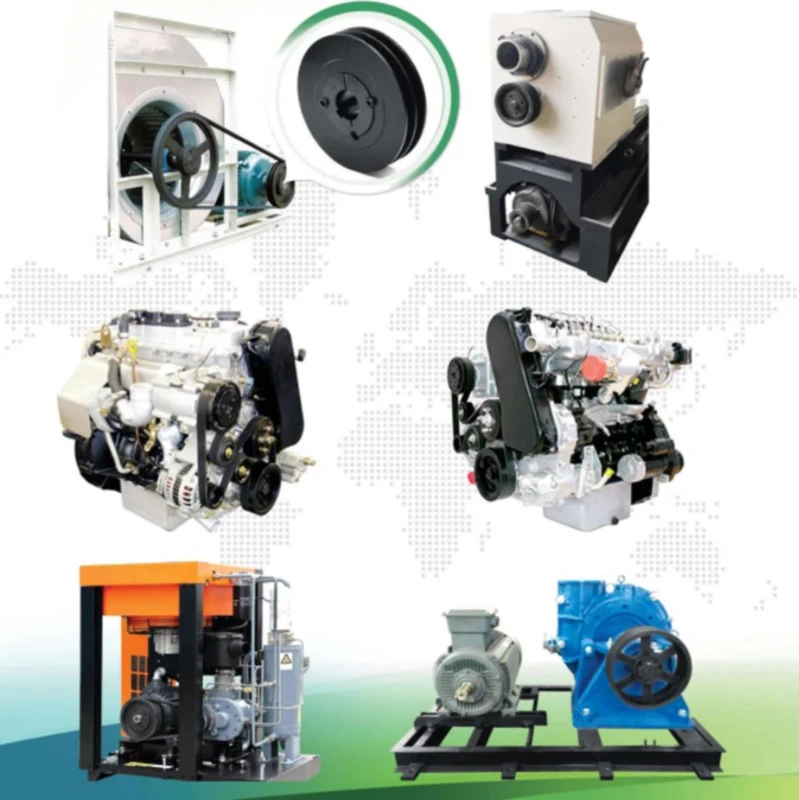
Treat Yourself to A Day at the Spa
Materials:
Cast Iron:
Cast iron is a popular material choice for taper pulleys, particularly for industrial and heavy-duty applications.
Cast iron provides good strength, rigidity, and wear resistance, making it suitable for high-load environments.
Steel:
Steel is another common material used for taper pulleys, offering higher strength and durability compared to cast iron.
Steel taper pulleys are often used in applications with higher power transmission requirements.
Aluminum:
Aluminum taper pulleys are lightweight and suitable for applications where reduced weight is desirable, such as in automotive and aerospace industries.
Aluminum provides a good balance of strength, corrosion resistance, and cost-effectiveness.
Composite Materials:
In some specialized applications, taper pulleys may be made using composite materials, such as fiber-reinforced plastics.
Composite materials can offer advantages like reduced weight, improved corrosion resistance, and enhanced thermal properties.
Manufacturing Processes:
Casting:
Taper pulleys are often produced using casting techniques, such as sand casting, investment casting, or die casting, depending on the material and production volume requirements.
Casting allows for the creation of complex shapes and profiles required for the tapered design.
Machining:
For smaller production runs or specialized taper pulleys, the components may be machined from solid blocks of material, such as steel or aluminum.
Machining processes, including turning, milling, and boring, are used to shape the tapered profile and other features of the pulley.
Fabrication:
In some cases, taper pulleys may be fabricated by welding or assembling multiple components, such as the tapered hub and the bushing or adapter.
This approach is often used for custom or specialized taper pulleys that require unique configurations.
Heat Treatment:
Depending on the material, taper pulleys may undergo heat treatment processes, such as quenching and tempering, to enhance their mechanical properties, wear resistance, and overall durability.
Surface Finishing:
The taper pulley surfaces may undergo finishing operations, such as polishing, painting, or plating, to improve their appearance, corrosion resistance, and surface smoothness.
Blog
Why choose our company?
1. High-quality products: Our company is committed to providing the highest-quality taper pulley. Our products are precision-engineered and manufactured using advanced materials to ensure durability, reliability, and consistent performance.
2. Comprehensive Service: We pride ourselves on providing excellent customer service. Our professional team is ready to answer your questions, provide technical support, and provide solutions tailored to your needs.
3. Competitive Prices: Our company offers competitive prices without compromising quality. We believe in creating value for our customers and work hard to ensure our products fit every budget.
4. Excellent after-sales support: We know a product is only as good as the support you receive after purchasing it. Our company provides comprehensive after-sales services, including timely repair, replacement, and maintenance, ensuring that your taper pulley is in optimal condition for a more extended period.
5. Rich product range: Our company provides a variety of taper pulley shafts to meet different applications and requirements. We can provide you with the right product.